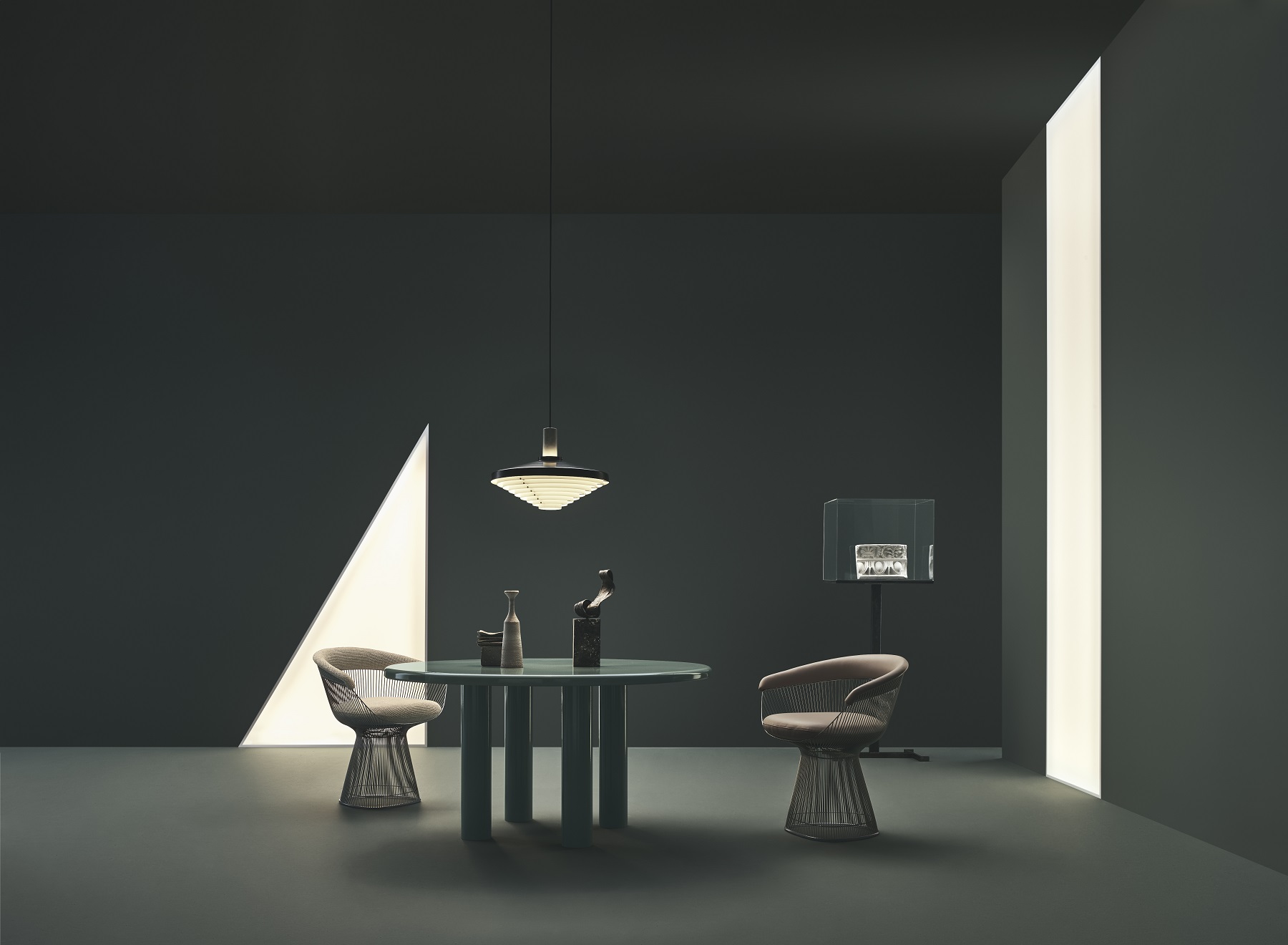
Edward Barber and Jay Osgerby founded their eponymous studio in 1996 after graduating with master’s degrees in architecture from The Royal College of Art in London. From their first studio in Trellick Tower in London, they designed their first piece, the Loop Table, produced by Isokon in 1997.
They have developed collections for several major furniture manufacturers as well as limited edition pieces and one-off works for both private and public commissions. BarberOsgerby’s work is held in permanent collections around the world including the V&A Museum, London; New York’s Metropolitan Museum of Art; London’s Design Museum; and the Art Institute of Chicago.
The Barber Osgerby Lounge Collection, introduced in 2014, was the pair’s first collaboration with Knoll. The lounge collection was followed in 2015 by the Piton Collection of stools and Pilot, a swivelling lounge chair, in 2016.
The Smalto Table, their latest collection with Knoll, is their fourth collaboration with the manufacturer and the third to receive a Design Guild Mark, with the Lounge Collection and Pilot having also been awarded the Mark.
We caught up with the duo to find out more about Smalto.

What initially inspired you to design Smalto?
We have been keen to work with enamel for some time now and Knoll were interested in exploring the possibilities with this finish. The appeal was the incredible durability that the enamelling process produces along with intense colour and a resulting quality of tactility. We wanted to learn more about the process and this informed the design.
Explain its concept.
We soon discovered that when applied to sharp edges and corners, enamel can be vulnerable to chipping. The characteristics of the material set the formal parameters of the design for us. This led to a table with a very generous radius and tubular legs. The combination of this form with a high gloss finish and distinctive proportions created a strong and sculptural presence.

How have you struck the balance between function and design with this product?
The idea to use enamel was in part because we knew how durable it would be but also because we could get an impressive colour quality. Any large table in a space will be heavily used for all sorts of activities but with Smalto the sculptural form creates a focal point for a room.
Who does this design appeal to?
We designed Smalto to appeal to a wide audience. The design is intended to be timeless so it can be passed on down through the generations. The three size and five colour options will suit a range of scenarios from dining table to meeting space.
How long did the design process take, from initial sketches to roll out?
The design process took roughly two years from sketches to launch. Knoll were fantastic collaborators who allowed us to explore the materials boundaries and push the design.

What modifications did you make along the way?
As with all projects in the studio, there is an ongoing process of reviewing models until we reach a physical solution. The design might start with sketches but it quickly becomes something quantifiable in space and we work through many iterations before the design is finalised. The same can be said for material samples and colours.
In what way do you think this design is different from anything else available on the market?
Made entirely of enamelled steel, this design process was an exercise in reduction and purity for us. Smalto is an exceptionally durable collection of three tables that are both contemporary and classic.
What was the most challenging aspect of the design?
The aim was to strike a balance between a strong but friendly design. Something that sounds relatively straightforward but in practice can be challenging to translate into a design.
For more information, go to barberosgerby.com/






